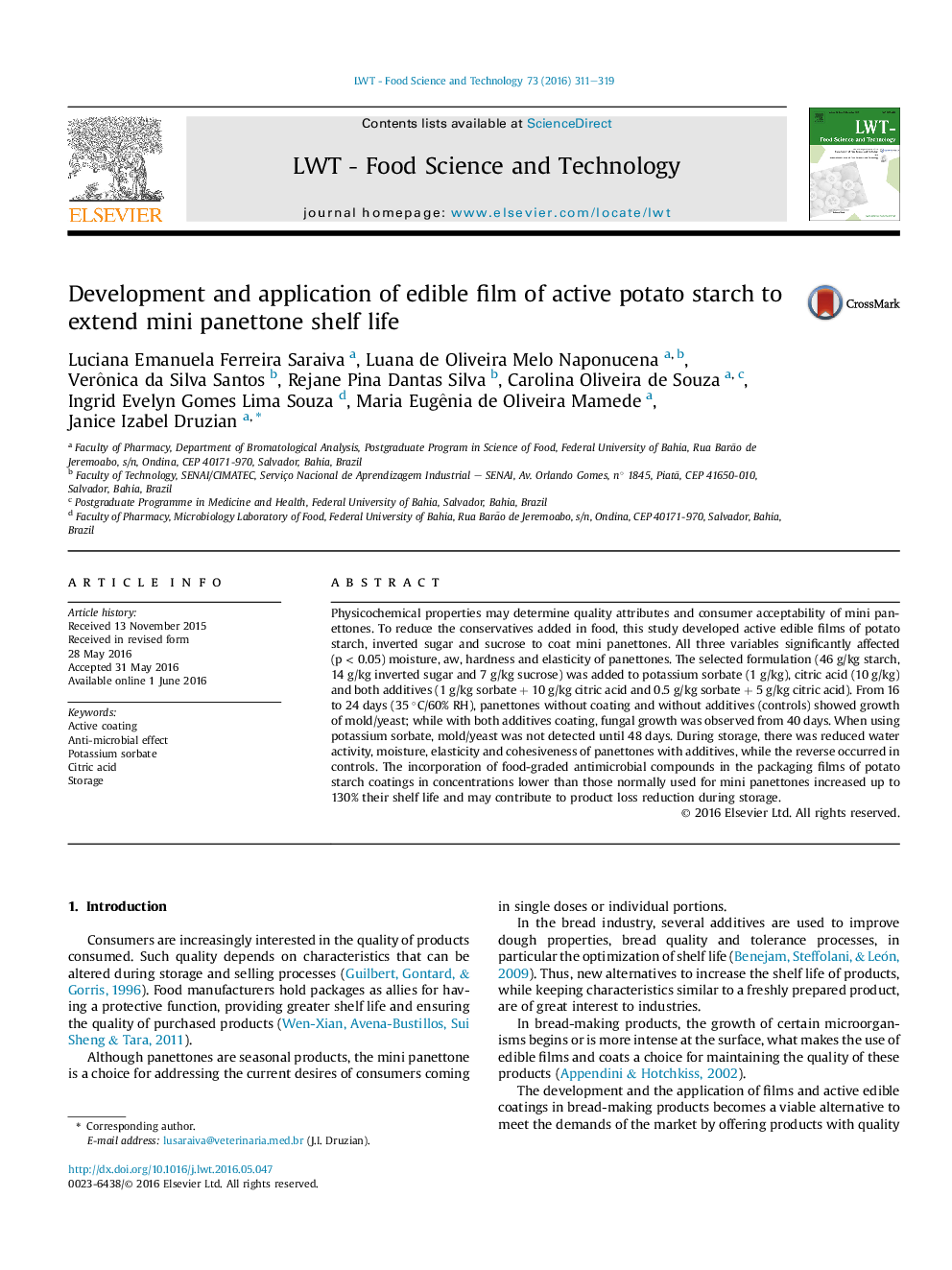| Article ID | Journal | Published Year | Pages | File Type |
|---|---|---|---|---|
| 4563365 | LWT - Food Science and Technology | 2016 | 9 Pages |
•The incorporation of additives inhibited the growth of yeasts and molds in panettone.•Edible coatings are an alternative to reduce losses in food.•Bakery products with edible films have a longer shelf life.•The use of active films reduces the amount of preservative ingested by the consumer.
Physicochemical properties may determine quality attributes and consumer acceptability of mini panettones. To reduce the conservatives added in food, this study developed active edible films of potato starch, inverted sugar and sucrose to coat mini panettones. All three variables significantly affected (p < 0.05) moisture, aw, hardness and elasticity of panettones. The selected formulation (46 g/kg starch, 14 g/kg inverted sugar and 7 g/kg sucrose) was added to potassium sorbate (1 g/kg), citric acid (10 g/kg) and both additives (1 g/kg sorbate + 10 g/kg citric acid and 0.5 g/kg sorbate + 5 g/kg citric acid). From 16 to 24 days (35 °C/60% RH), panettones without coating and without additives (controls) showed growth of mold/yeast; while with both additives coating, fungal growth was observed from 40 days. When using potassium sorbate, mold/yeast was not detected until 48 days. During storage, there was reduced water activity, moisture, elasticity and cohesiveness of panettones with additives, while the reverse occurred in controls. The incorporation of food-graded antimicrobial compounds in the packaging films of potato starch coatings in concentrations lower than those normally used for mini panettones increased up to 130% their shelf life and may contribute to product loss reduction during storage.
